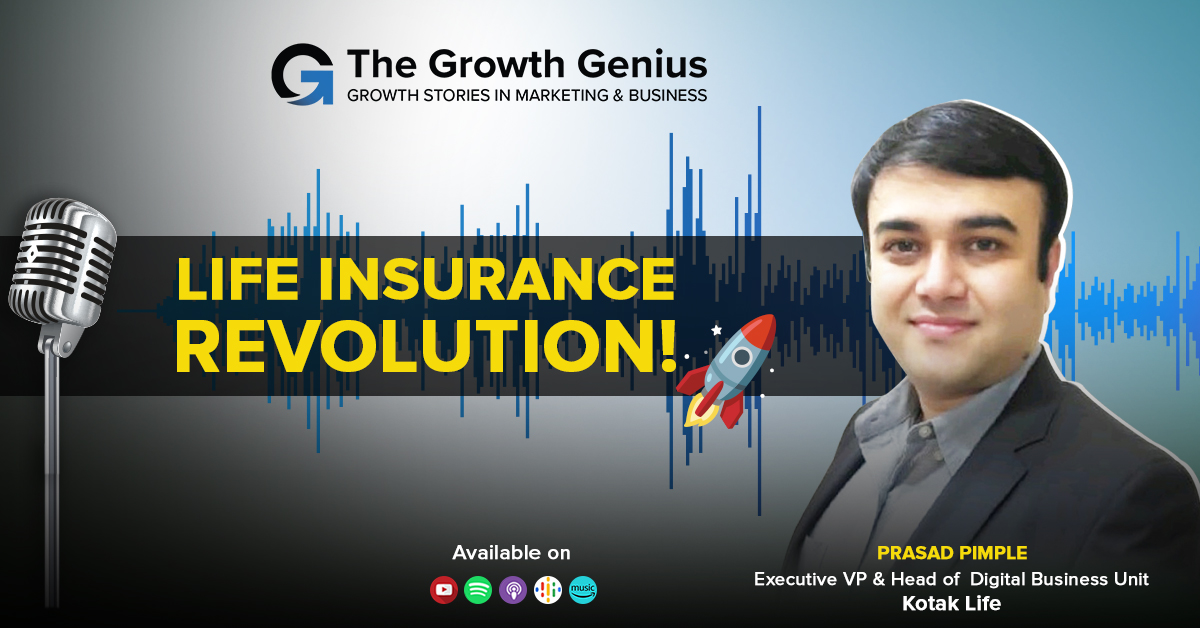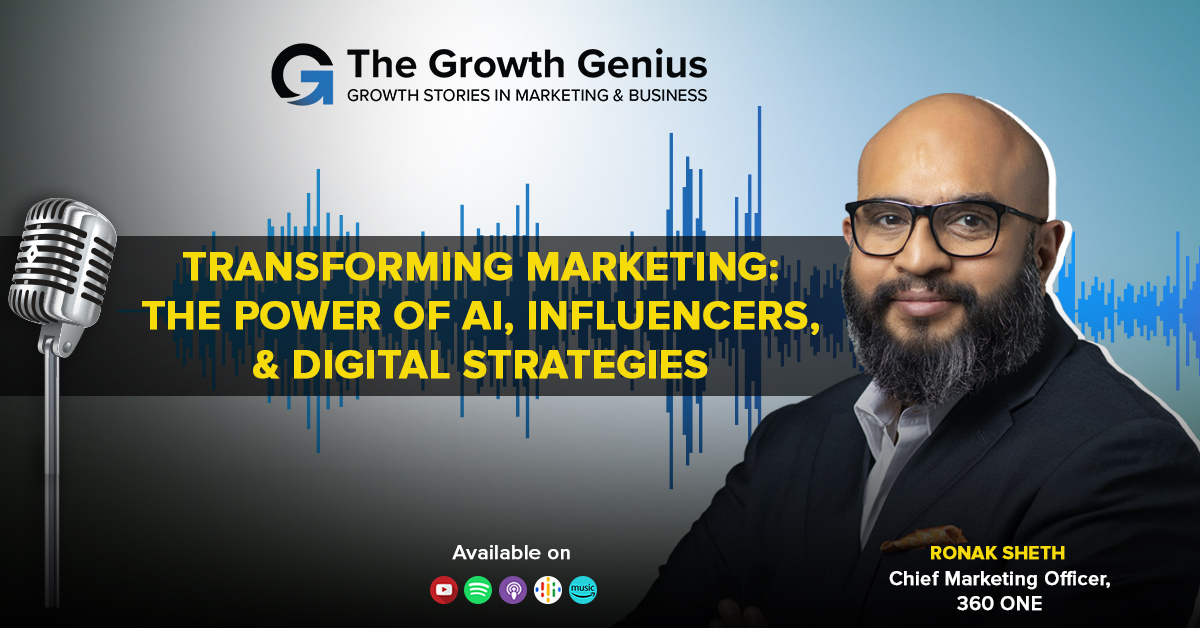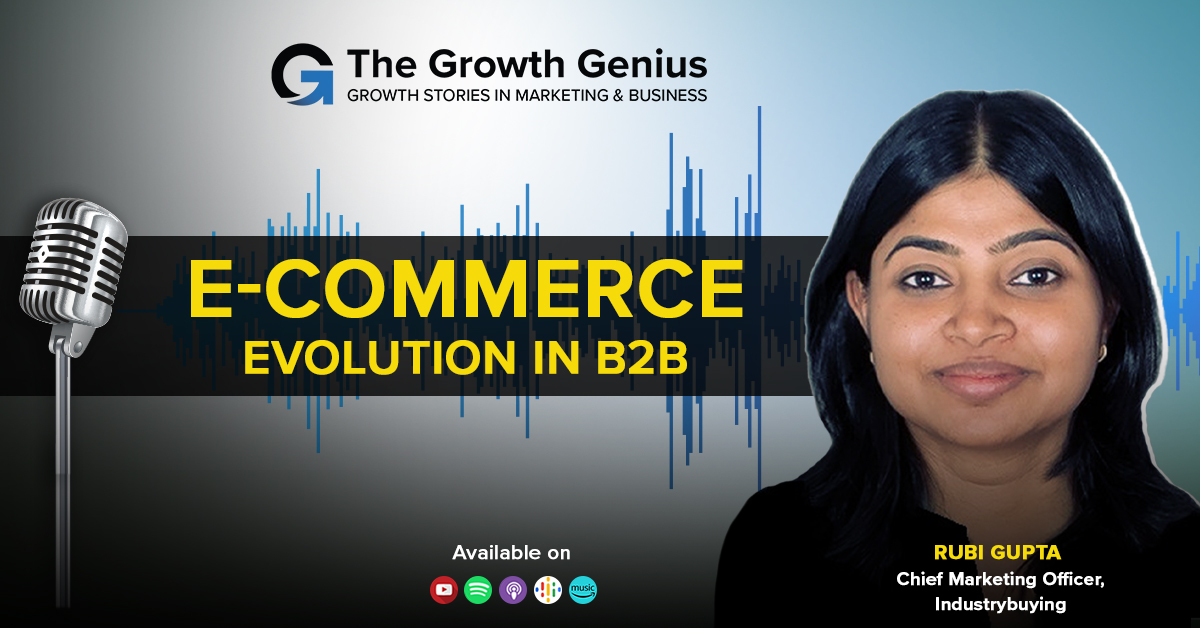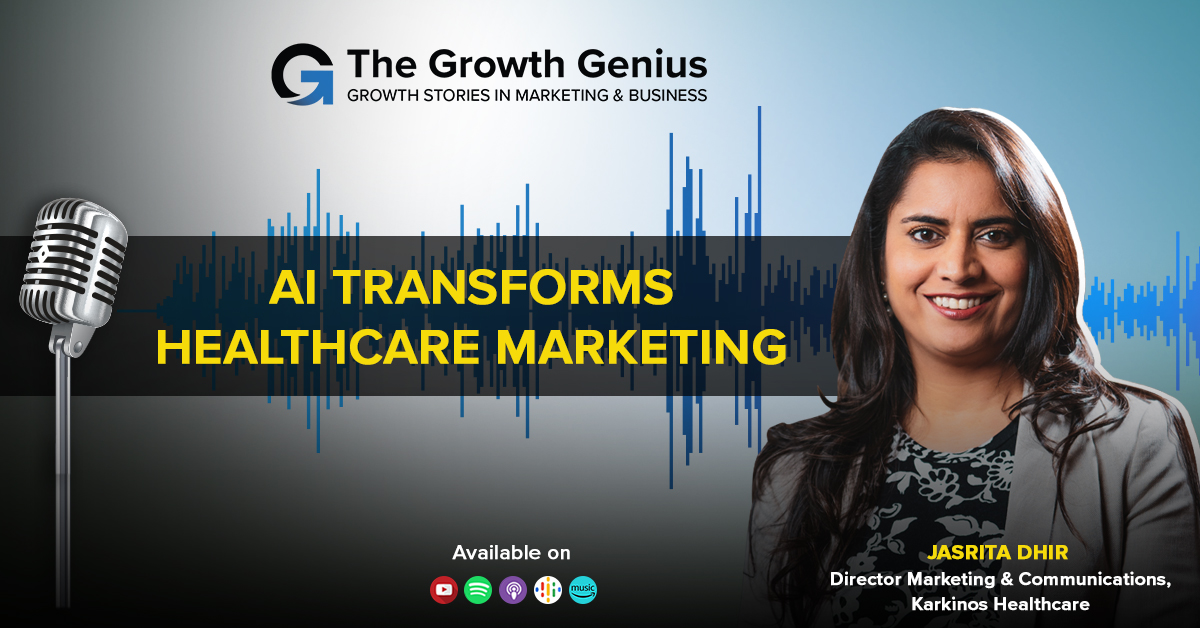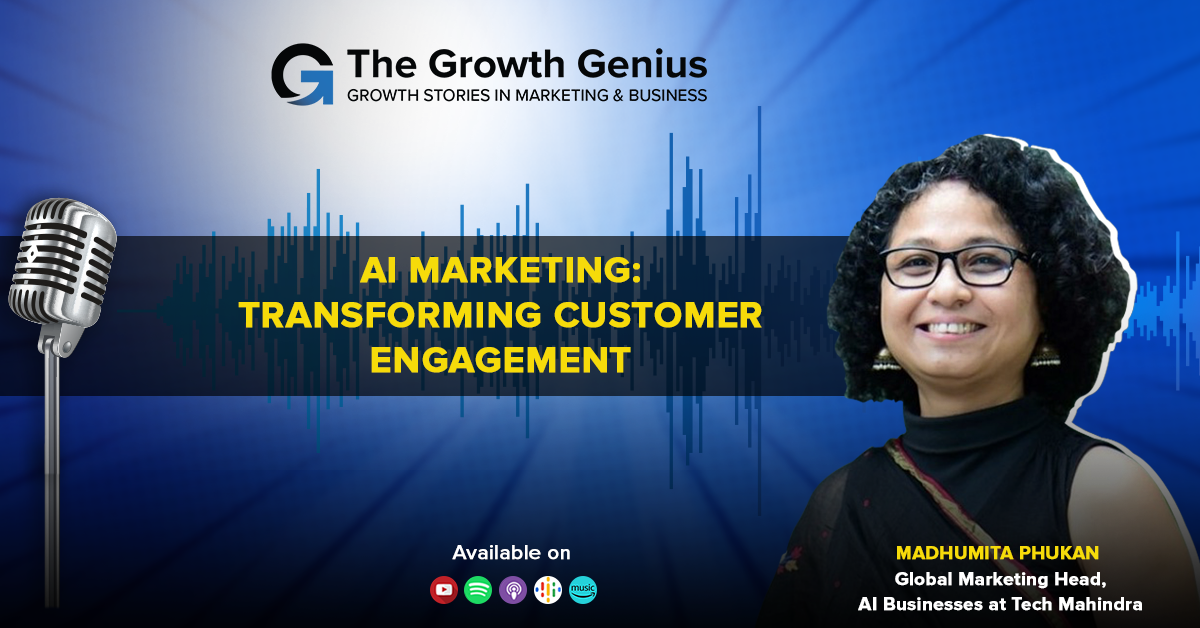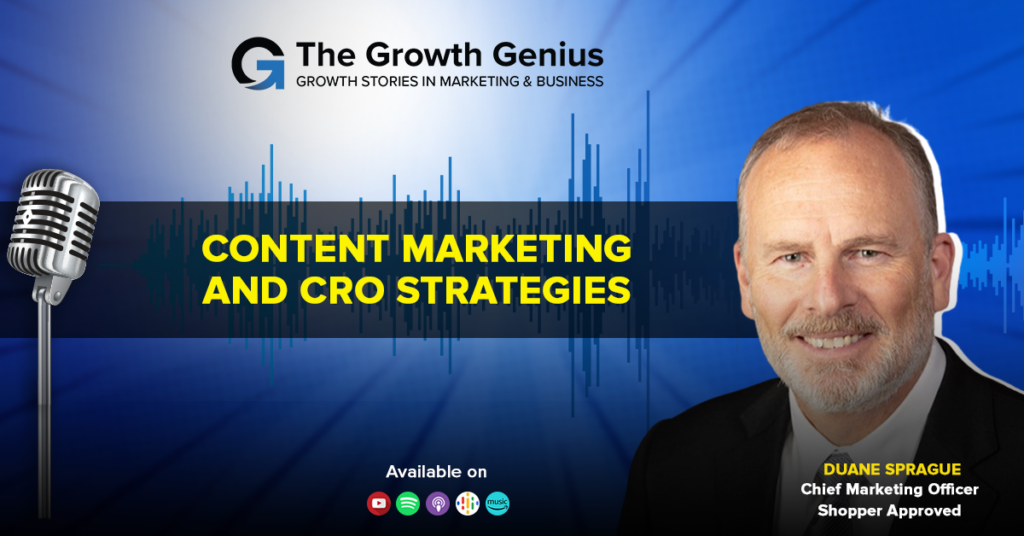
Witness an Increase in your ROI
Unlock higher rankings, quality traffic, and amplified conversions through tailored award-winning SEO strategies.
Summary
User-generated content (UGC) has become a powerful tool for businesses to engage with their audience and drive growth. Duane Sprague, the Chief Marketing Officer at Shopper Approved, emphasizes the importance of user generated content in building trust and credibility. User generated content refers to any content created by consumers, such as reviews, testimonials, and social media posts. Sprague highlights that UGC allows brands to showcase real experiences and opinions, which resonates with potential customers. He also discusses the benefits of user generated content, including increased brand awareness, improved SEO, and higher conversion rates. Sprague advises businesses to encourage user-generated content by providing incentives, leveraging social media platforms, and actively engaging with customers. Overall, UGC is a valuable strategy for businesses to harness the power of their customers’ voices and drive growth.
Key Take Aways
- Importance of User-Generated Content (UGC): UGC plays a crucial role in digital marketing as it helps build trust, authenticity, and engagement with the target audience.
- Leveraging Social Proof: UGC acts as social proof, showcasing real customers’ experiences and opinions, which can significantly influence potential customers’ purchasing decisions.
- Building a Community: Encouraging UGC helps in building a community around your brand, fostering a sense of belonging and loyalty among customers.
- Engaging with Customers: Digital marketers should actively engage with customers who create UGC, responding to their comments, thanking them, and showing appreciation for their contribution.
- Monitoring and Moderating UGC: It is essential to monitor and moderate UGC to ensure it aligns with your brand values and guidelines, maintaining a positive and safe environment for users.
- Incentivizing UGC: Offering incentives, such as discounts, rewards, or recognition, can motivate customers to create UGC, increasing their engagement and participation.
- Utilizing UGC Across Channels: UGC can be repurposed and shared across various digital marketing channels, including social media, websites, email campaigns, and advertisements, to maximize its impact.
- Measuring UGC Performance: Digital marketers should track and analyze the performance of UGC campaigns, using metrics like engagement rate, conversion rate, and customer feedback, to assess their effectiveness and make data-driven decisions.
Read Transcript
Kaushal Thakkar:- Welcome to the Growth Genius podcast brought to you by Infidigit, an organization focused on search engine optimization and conversion rate optimization. I’m Kaushal Thakar, founder of Infidigit and your host for the show. Today we have the pleasure of having Duane Sprague with us who is the Chief Marketing Officer at Shopper Approved. I’m at DJ At at a conversion conference in Las Vegas and was impressed by his session this year. He was also the speaker at SMX Advanced and his session at SMX on how to drive rankings and conversions with the right content was equally impressive. So I invited him to the Growth Genius podcast to share with us some of the content insights that can help us in driving visits and conversions. Let’s welcome DJ Rag. Hi DJ, how are you doing today?
Duane Sprague:- I’m doing very well. It’s a pleasure to be here and to be speaking to your audience and continuing our conversation that we started in Las Vegas.
Kaushal:- DJ, some of our audience may not be following you, so please help us know DJ Sprague better.
Duane:- Sure. I have been in marketing, advertising, and public relations, digital marketing from both the client and agency side for boy, almost 35 years now. I’ve had a couple of my own agencies in the agency capacity. I had as clients. Hyundai Motor America, Toyota Motor Corporation. JD. Power and Associates also worked with Suzuki and some other large international companies, primarily in consulting, ghostwriting digital assets, training, and driving consumers to their websites and their events. Worked with many, many smaller companies, obviously from coast to coast in the United States and been in really kind of the digital marketing space since the late ninety s nineteen ninety nine specifically started with Hyundai Motor America, working with their PR department to drive traffic to their digital PR events and been working in the digital space ever since.
Kaushal:- Great and 1990s. Many of our audience members would not be even born at that point in time, so it’s pretty impressive. DJ and DJ, we would love to know more about Shopper Approved as well.
Duane:- Yeah, absolutely. Shopper Approved has been around since 2010, so 13 years now. We are a Google Review Partner for both seller ratings and product reviews. Seller ratings are the reviews about your website and those show up in your Google Ads as stars in your ads. They also show up organically and on your website and on our Search optimized certificate. So they give you a broad footprint in search results, especially for brand searches, brand review searches, and then product reviews. We’re also a Google Review Partner for product reviews and those show up in your Google Shopping as well as your website and organic product search results. We also have a Search Optimized QA tool, and it’s a very unique tool because each question and answer is a separate subfolder on your website and they’re automatically search optimized using Schema, Markup and H1 titles to appear in your featured Snippets People also ask, as well as your top organic search results. And all three of those combined proctor views, seller ratings, and QA plus our website security seal comprise what we call our Traffic and Conversion Suite. The Traffic and Conversion Suite looks very much like what you see on an Amazon product page, where you have your product reviews and your QA right next to each other. And then you have your website security seal right by the Buy Now or Add to Cart button. And we have found, doing our own research, that people really prefer this. In fact, 91% of those surveyed said that they prefer that layout and design because they’re comfortable with it, they’re familiar with it. Coincidentally, it’s now the same configuration and design and user experience that Walmart and Best Buy and Home Depot and Lowe’s are all using. So it’s a very common user experience, and it drives trust and credibility for those brands. It’s all part of what we call the User Generated Content, or UGC strategy. Because obviously, the reviews are created by consumers or users. The QA can be created by consumers. It can also be created by the brand. And so you’re basically aggregating all this wonderful question and answer content, all of which is search optimized. And that creates a really good high level of trust and credibility and engagement because users love user generated content. They love to see what other users are saying, what their experience was, or their answers to questions about the product. And of course, Google loves that because Google really loves what the consumer loves. And that’s the bottom line. If the consumer likes it, Google likes it. So UGC is a very powerful content strategy. And in a nutshell, that’s what Shopper Proof does. We do drive more traffic and more conversions because of that UGC and that search optimized content to drive visibility in the search engines, as well as trust and confidence on the website.
Kaushal:- Thanks. In our experience, also, while implementing so many SEO strategies, we have seen, user generated content can work out wonders, right? It can help boost organic traffic leaps and bounds. So that’s something which is really impressive. Any particular case study or any particular example that you could share that okay. Before a brand joining Shopper approved where the kind of numbers and after they joined hands with Shopper approved implemented that particular platform, that the numbers were, let’s say, at a other particular level?
Duane:- Yeah, absolutely. We have one client, an ecommerce store, that through QA alone, has increased their organic traffic by 400%. And we have another ecommerce client that has increased their conversion rate on their product pages. When people engage through QA, they see a 75% conversion rate. Now, to put that in perspective, in the US. The average product page conversion rate is 7%. So this company is getting a 75% conversion rate. When people engage in the QA. And basically what that tells you is that the QA tool is answering the questions that people have about that product and they’re doing it outside of chat, outside of customer support. They’ll be able to answer those questions 24/7 instantaneously and therefore resolve any lingering questions or concerns they have about the product. Now, when you combine that with product reviews, which is also obviously a form of user-generated content, people can see how many people have bought that product before. So that’s social proof. They have seen the average star rating, so that’s trust and credibility and they can see what people have said about that product in the product reviews. So you combine that with the QA and you’re essentially answering all the questions people would have about that product. The neat thing about our QA tool as well is it will automatically scrape and index all the information on your website about that product. So it could be a specs sheet, it could be a comparison guide, it could be a blog article. Whatever information you have on your website about that product, it will find it and provide that as part of QA. Now, in addition to that, we’ve supercharged it with artificial intelligence or AI to go out to the web and find what people are asking about that product or category in Google Search. So it will know here are some common search terms or questions about this product in the search engines and these are questions you should be answering because if you’re answering those questions that people are actually asking online, obviously you’re going to provide that content that will surface on page one. Again, it’s all search optimized. Each question answer creates its own subfolder in your website. So it’s very quick and easy for Google to find and index that content. It automatically builds in schema markup, the H1 title tag is the question. So that’s going to show up in your search results. And in URL strand that does optimize very very well. Not 100% because Google is Google and do what they do, but optimizes very very well for the featured snippet. Also the people also ask and position one, two or three typically in the organic listings. And of course that’s where 68% of your clicks and traffic come from is those top three search results. So by showing up there you’re going to get the lion’s share of the clicks and the traffic. We call it the Traffic conversion Suite because the combination of the seller ratings and those review stars showing up in your Google Ads as well as your seller ratings showing up in your Google Shopping and then your product reviews and review stars showing up in Google Shopping as well, plus organic search results, plus on your website, plus of course, that QA, which we just talked about all of that together creates a very, very powerful, UGC, user generated content strategy that is going to show up in the search results and on your website, driving traffic, trust, engagement and conversions. So there’s lots of research around the fact that the more time people spend in your website, the higher they convert, because they spend more time engaging in your content and your product and your information. Of course, the other side of that is the more time people spend on your website, that’s a signal to Google that this is a good website for that search term. So obviously the opposite of that is high bounce rate. Well, people bounce typically because they don’t trust the website or they’re not finding the information they’re looking for. So if you’re creating a trustworthy website from the very beginning, home page, category page, product page, throughout the buyer journey, and you’re providing that rich user generated content that consumers trust and want to see, then you’re going to increase the time on page, reduce bounce rate, which of course are SEO signals as well. So not only the content itself, but the very nature of the user experience on the website is going to improve the SEO engagement time on page and conversion rate. So yes, we’ve got wonderful statistics. Google even says that review stars in Google Ads increases click through rate by an average of 17%. We have clients that say they have increased their click through rate by 35% in the Google Ads once the review stars start showing up. We’ve seen clients with 141% increase in conversion rate. We’re running some AB split tests right now with a handful of clients just showing the review stars on their home page as well as the number of reviews collected and the percentage of customers that would recommend their website. And we’re seeing just by showing that and changing nothing else on the website, a 44% increase in conversion rate. So, trust is critical. In fact, we all have heard the saying that content is king with SEO and that is certainly true. But if you boil that down to really understand why is content king, it’s because what people are looking for is trust and the good content is creating trust. And so I like to say trust is king.
Kaushal:- Yeah. And of the Google factors of Eeat so you feel that trust is the most important thing of the four pillars when Google speaks of?
Duane:- Yes, in fact Google themselves in their Google Help Docs for the web developers in the EEAT experience, expertise, authority and trust. They actually say in their Google Docs for developers that of those four criteria, trust is the most important because the consumer really is looking for a trustworthy source of information. They want to be able to trust the website, trust the product, and trust the purchasing experience. And that’s why having that website security seal is so important. Even if you’re a big brand, even the major brands, amazon still displays that security seal by the add to cart button because it’s a subconscious signal for the consumer just to remind them that this is a safe website, this is a safe transaction. And these days, with the spyware malware skimware, that’s stealing people’s information, email addresses, contact information, and credit card information, people are very, very concerned about a secure form, a secure transaction, a secure checkout. If they don’t see those signals of trust, then they’re going to bounce. Statistically, globally, the card abandonment rate is 70% 69.7%, rounding to 70%. And a big part of that is simply trust. People have second doubts. Is this a secure website? Transaction, shopping cart? Am I getting the best deal? What’s the return policy? What’s the warranty information? Maybe I should check for a better price. Well, that’s the information that you need to be providing in your QA, especially in your product page, so that people don’t get to the shopping cart and then abandon the cart because they’re really not sure about the answers to those questions. And those are the questions that are going to stop people from buying. So if you can provide that information, warranty information, guarantee information, return policy, price match guarantees, et cetera, and you can provide all that information right there in your QA on the product page, then your conversion rate obviously is going to increase dramatically. And that’s why I said we have one client that has a 75% conversion rate on their product page. When people engage in the QA, why? Because they’re getting their questions answered. There’s no more ambiguity. In fact, one of the biggest reasons people don’t convert is ambiguity. They’re uncertain about something. They’re uncertain about some information about the product or the company or the return policy, whatever it is. If they’re uncertain, they will bounce or they will abandon the cart. And that’s why that content is so important to provide. You have to think like the consumer. And you could think like Google, what does the consumer want? Right? Well, they want the same information you would want. But if you’re not providing the same information you would want, well, your consumers aren’t going to convert either.
Kaushal:- Definitely. And DJ, while mentioning this, you also mentioned that your platform generates the questions by itself based on the other websites. How about the answers? Is that something?
Duane:- Great question. So the AI component of our QA tool will scrape your website for information about the product. It will also look at what people are searching for in Google about your product. It will also look at other marketplaces like Amazon, Walmart, Best Buy, et cetera, and it will find those answers and provide them to you. And then, of course, you can rewrite those questions and answers. So it’s not duplicate content, but it’ll tell you what people are looking for.
Kaushal:- Understood. And specifically when we speak about the current times of AI, and many marketers today generate content via AI, what is your view in terms of generating this particular kind of content. Specifically in respect to the trust that we were speaking earlier, would the AI content be able to gain trust of the users in a similar manner as real user generated Content or real human generated content?
Duane:- Yeah, those are great questions, and everybody’s asking those questions right now. Google has actually come out recently in the Google Developer Guidelines and said AI-generated content is okay, but you should identify how your content was generated. So if you’re using AI to generate content, then in Google’s recommendation you should recognize that and say this content was generated through AI tools. However, my recommendation is that you never take AI content at face value because AI is not intelligent. Even though artificial intelligence is its name, it really has no way of discerning fact from fiction, false from true. All it’s doing is taking information from the web and assembling it in a cohesive manner. It has no idea if that information is true or false or accurate or inaccurate or if it’s the best information. It has no idea how to do that. So it’s really up to you, the human, to look at that AI-generated content and thoroughly review it and kick out any information that is inaccurate or not as accurate as other information or other sources. I would also make sure that you do your own fact-checking so you can take a sentence or two or even a short paragraph or a factoid, put that into your Google search bar, and find the source for that content or a better source for that information. But I like to say that all AI-generated content should be humanized because if you just take it straight out from Chat, GPT, or Surfer IO or pick your AI tool, you really don’t know if that’s good information or not. Does that answer your question?
Kaushal:- Yes, it does. And for our audience, I’ll just share one other tool which I love these days, that’s originality AI, which does a wonderful work in terms of informing us that whether the content was generated by humans or by AI. So that’s also another wonderful way to understand whether the content is AI generated Content or human generated content. And I’ve seen difference in terms of rankings. Also, when we get higher score on originality, we see better scores on the Google search engines as well. So thanks for helping us with that. Now, in this particular age of generating more content via AI, any specific that you are seeing for content marketing in 2023?
Duane:- So, going back to Google and their Helpful Content Update last year,
Kaushal:- Our universe revolves around Google, so that’s something we’ll be revolving around that.
Duane:- Yeah, so Google came out with a Helpful Content Update in September of 2022 and of course they’ve been talking about creating content that’s helpful, that is seen as a resource that’s going to answer people’s questions. They’ve been talking about this for years. And it’s been baked into pretty much all of their algorithm updates since about 2012, 2013 in one form or another. But they finally came out and said it. Instead of Panda and all these cute names, they just finally said it. Helpful content Update. And basically they’re telling you if you’re not creating content that is helpful to the human, not the search engines. They actually said, do not create content for search engines. Create content for humans. Create content for your customers, for your shoppers, answer the questions they’re asking, provide the information they’re looking for. And it’s really not about creating content. That is all about the brand and hyperboles. We’re the best, we’re the greatest, we’re whatever, most effective, most affordable, blah, blah, blah. Nobody cares because nobody believes it. So what you really need to do is answer the real questions people are asking, like, how does your brand compare to your competitors? How does product A compare to product B? What are the top five brands in your space? When should I consider your brand versus a competitor? In other words, where are you strong, where are you weak? And how do you compare to the competitors in those areas of strength and weakness? Because if you can be transparent and honest and authentic and be a resource of quality information, then Google is going to rank you higher and the consumer is going to trust you more. Again, trust is king if there’s no trust, doesn’t matter what your content is. It doesn’t matter how great your content is if nobody trusts it or if it doesn’t provide value. So you have to provide value. And think about why people go to Google to begin with. I say Google generically. It could be any search engine, but I’m just saying that generically. But the reason people go to search engines typically is because they’re looking for an answer to a question. They’re looking for helpful information. And if you’re providing those answers and you’re providing that helpful information, then you’re going to be seen as a helpful resource. And that’s very important because if you’re seen as a helpful resource, people trust you and they come back to you. If you’re not seen as a helpful resource and you’re just a vendor selling a product, you don’t differentiate at all. And the only way you can differentiate is price. Lowest price, right? And that’s a race to the bottom. Just keep dropping your price, reducing your margin, and eventually, you’re making no money or you’re going out of business because you can’t compete based on what people really like, which is a trustworthy brand that they have confidence in, that they will buy from over and over again. So your customer lifetime value goes up when you’re seen as a helpful, trusted resource. And this is something that even Walmart and Amazon, they don’t always have the cheapest prices. They really don’t. Obviously you can find a cheaper price on Alibaba than you can on Amazon, but do you trust Amazon more or Alibaba more from a vendor you’ve never heard of? And so the trust really is important. And Walmart is not the cheapest, they’re not the cheapest retail store, they’re not the cheapest online store, but people trust them. You can find cheaper things all over the web, but people don’t trust those brands, those vendors, those websites. So trust is very important. That allows you to sell at a higher margin, sell at a higher volume, and get repeat customers.
Kaushal:- Thanks. So, DJ, we’ll move a little ahead of Google and go deeper into conversion rate optimization. And that’s something which is becoming more and more important today. As you mentioned that several brands are seeing better conversion and it’s more crucial when the number of visitors is the same. If your conversion can increase, definitely it meets more money and everybody loves it. So my question to you would be, while you shared some best practices in terms of keeping the layout the same for enhancing the conversion rate, any other techniques which you have seen work really well when it comes to conversion rate optimization?
Duane:- Absolutely. So conversion rate optimization or CRO is a huge deal. 90% of websites fail in the first four months. Statistical study, I’ve looked at 14 different studies around why websites fail. And typically the common themes are lack of traffic and lack of conversion rate. Your average shopify website converts at 1.4%. The average ecommerce website in the US. Converts at 2.3%. So obviously, conversion rate and these are universal, right? This is all visitors. This is not the visitors that get to a product page. Product pages typically converted about 7%, but the universal conversion rate is about 2.3%. So you need to think about conversion from beginning to end, not just on the product page, not just the category page, not just the home page, but going all the way back to search results. Because when people see stars and reviews or review stars in organic and paid search results, they automatically come to your website with more trust to begin with. So it’s very important to get those review stars in your organic and paid search results. Google Ads, Google Shopping, your own brand again, organic search results as well, so that they have trust going in. Now, as soon as they hit a product page or category page or home page, they need to see trust signals immediately because within milliseconds they’re trying to decide, do I trust this website? Do I trust this product? Should I stay here or should I leave? So trust is very important from the very beginning, from search to checkout, and you have to continue those trust signals throughout the buyer journey. And one of the ways to do that, obviously, is to show your seller ratings, which is your website reviews and your product reviews. If they’re on a product or category page. You also want to be able to show things like in business since 2014, or over 500,000 products sold or 80,000 satisfied customers. Those are all trust signals. They’re going to tell people, oh, I’m in the right place. These people have been around a long time. A lot of other people have bought from them. That’s social proof. People always look for social proof. Consciously or subconsciously, we all look for the same things and the same signals. So if you have those trust signals on your website and that social proof, it’s obviously going to drive more trust. But again, you have to be thinking about the entire buyer journey, not just a specific page. However, once people get to the category page, that’s where you want to show ratings and reviews for all the products on that category page. I also recommend that you only show three to five products at a time. Now, you might have 30 products in a category, but if you show them all at the same time, it creates a lot of confusion. People don’t know where to start, analysis, paralysis. So basically chunk them into groups of three to five at a time. And again, wherever possible, show those product reviews so people have enough trust and confidence to select a product and go to the product details page. Once on the Product Details page, of course, you want to show specific product reviews, your product QA, your website security transaction seal. And you also want to be able to show information like warranty guarantees, shipping policies, shipping costs, shipping information you want to show in stock, right? A lot of people have been kind of burned where they get all the way to checkout and it’s out of stock. Oh, this isn’t going to be shipping for three months or three weeks. So you want to be able to show that it’s available for immediate delivery. That creates trust and confidence as well. We know that the average cart abandonment rate is about 70%. That’s held steady for decades. And a lot of that is because people just don’t have the information they need to check out. So make sure you give them that information on the product page. If you have a price match guarantee, show it. If you have a 30-day guarantee, show it. All that information helps build trust and confidence and drive conversion. You also want to make sure that you have your product heuristics next to the product image above the fold at the top of that product page. The product heuristics are going to be your bullet points. The critical information about that product, it’s waterproof. It only weighs three pounds. It’s this dimension. It’s made out of this material. It fits with this product. The information that’s most important to people in selecting that kind of a product, give it to them right there. Don’t make them scroll down and click on a specifications page or an additional tab. Just give them that core information right there. Again, this is very popular with Google and your other successful marketplaces, and you just want to give them the information looking for right up front without a lot of scrolling and clicking. Because every time you force somebody to click, you’re going to lose a portion of your traffic and your conversion because people don’t like to click on a lot of things, they just want to have that information right there.
Kaushal:- Thanks for sharing that. Just one point, which I could share would be what are your views on colors and fonts? Do that also make a difference when it comes to conversion?
Duane:- Great question. So color psychology is important. Fonts are important. Obviously, you want to have a web-friendly font. You don’t want to have a complicated font that is difficult to read or too small to read because there are a lot of people with visual impairments. And if your font is too small, it’s going to be difficult for them to read and comprehend the information. And they may not they might not have enough interest in your company or your product or your solution to struggle to read your content. So they’ll just leave and find a website that’s more user-friendly. So definitely make sure that your font is web-friendly. It’s a simple font clean font. I don’t like serif fonts. Use a send-serif font. It’s cleaner, it’s simpler. And check it on mobile, on every type of mobile device to make sure there’s going to be large enough for even people with some level of visual impairment. So that’s fonts in terms of colors, we do know there’s a lot of psychology around colors. You want to make sure that you have a lot of color contrast. I don’t like colored fonts on a colored background because that creates a difficult reading experience for the user. And just make it simple. A black or dark gray copy on a white background is universally the most easy to read. I know a lot of people like dark backgrounds now, but reading research has shown that it’s actually harder to read content when it’s a reverse white copy on a black background. So I personally am not a fan of that just based on the research. As far as other colors, orange is a very optimistic, upbeat, cheerful color. Black is a very formal color. So if you have a brand that’s very formal, black is great. If you want something that’s more youthful, more energetic, more optimistic, your oranges, yellows, et cetera, make sure too, that all of your CTA call to action buttons are one color. Don’t mix them up. So if blue is your CTA color, make blue your CTA color throughout the website. And don’t make the mistake of making things blue that are not clickable. This is a very common mistake. People will use a primary color and let’s say it’s blue, and they’ll make their CTA buttons blue, but they’ll also make their headlines blue. They’ll. Make other assets blue and people will click on those thinking they’re clickable because the buttons are clickable. So make sure that you’re using a secondary color that’s not clickable, and using one clickable or actionable color. And if it’s using that color, then it’s actionable.
Kaushal:- Thanks, really great insights over there, DJ. DJ, coming out from SEO and content marketing also now, and even conversion Rate optimization. And this is just my second last question to you. What is the most important learning of your life other than SEO, content marketing, conversion rate optimization that you would like to share with our marketers and growth leaders today?
Duane:- Wow, that’s a great question. Reputation. You have to build a trustworthy, consistent, credible reputation for yourself, as a professional, as an expert, and for your brand. Because once your reputation is tarnished or questioned or ruined, then you have an uphill battle. No matter what. You’re always going to have a struggle if your reputation is in question. So build a positive trustworthy reputation individually, for yourself, for your company, for your brand, and guard that reputation. Never take a chance on doing something that is going to be a short-term gain for the possibility of ultimately a long-term loss because people don’t trust you anymore. And these days it’s so easy to create websites, it’s so easy to create content online. And people are less trustworthy now, or they don’t trust brands as much now as they used to because of the fact that there’s so many lookalike scammy websites and content. So anything you can do to build, maintain, protect a good reputation online and off, do it. These days it’s just so easy to do an online search and really find out what an individual truly is and a company. And so realize that you can’t hide, you can’t close the door and pretend to be something you’re not because everything’s out there now. So reputation is thanks.
Kaushal:- Thanks, DJ for sharing that. And DJ, one last question. Where can our audience connect with you?
Duane:- Great. LinkedIn Duane Sprague LinkedIn. You can also email me at dj@shopperapproved.com and those are the best places to connect with me. I love to talk about CRO and SEO and content strategy, love the web, love digital marketing, and anything we can do to help answer questions or provide resources. We like to be seen as a helpful resource as well. And so if you go to our blog, you’ll find all kinds of content that’s helpful for SEO, CRO, building trust, building reputation, and making a successful online brand.
Kaushal:- Thank you, DJ, lots of learning right from trustworthiness, helpfulness, being reputable, and lots of insights. So, thanks for this wonderful session. We would love to have you back, sometimes later, but thanks for joining us today.
Duane:- Wonderful. Thank you very much. Have a great day. Appreciate it.
Kaushal:- Thank you for joining us on this episode of The Growth Genius. I hope you learn how to build trustworthy and helpful content and websites from DJ Spark today. If you have any questions for DJ or for us, please include them in the comment section below and we will get back to you. Thank you. Now go out there and create growth for yourself and your organization. Thank you.


